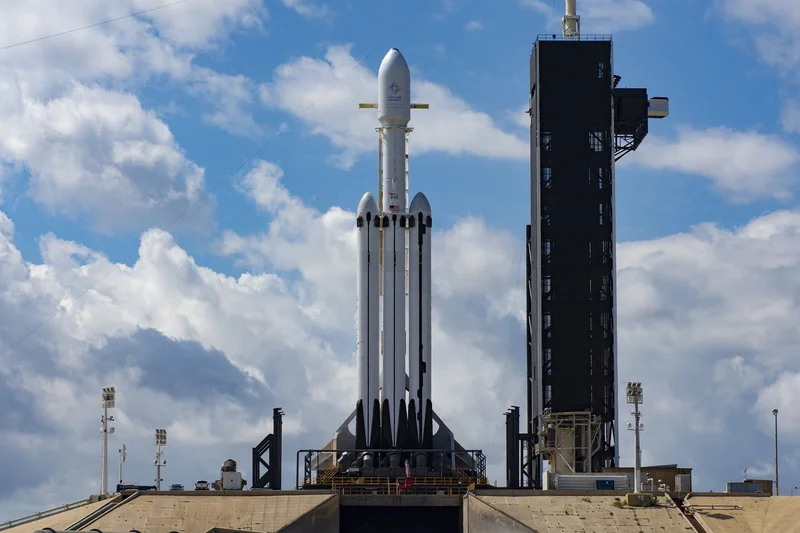SpaceX Launch Today: Starlink's Ascent and the Future of Global Connectivity
Alright folks, buckle up, because we just witnessed something truly incredible! Last night, under the inky California sky, a SpaceX Falcon 9 soared into the heavens, carrying with it the Sentinel-6B satellite. Now, I know what some of you might be thinking: "Another satellite? Big deal." But trust me, this is way more than just another piece of space junk. This is a game-changer, a potential revolution in how we understand and predict our planet's weather.
This launch, which you can read about [here], is the culmination of decades of work, a joint effort between the US and Europe to monitor our oceans with unprecedented accuracy. Sentinel-6B isn't just taking pretty pictures; it's measuring sea levels, wave heights, and ocean winds with such precision that it's going to blow our old forecasting models out of the water. According to NASA, SpaceX Launch US-European Satellite to Monitor Earth’s Oceans, the satellite will provide invaluable data for climate monitoring.
The Ocean's Whisper: Listening to the Future
Think of our oceans as a giant, whispering oracle. They hold the secrets to our planet's climate, and Sentinel-6B is our new, super-sensitive microphone. This satellite is the second of the Jason Continuity of Service missions, following in the footsteps of Sentinel-6A Michael Freilich, and continuing a legacy that started way back in 1992 with the TOPEX/Poseidon mission. We're talking about thirty years of uninterrupted data collection, a treasure trove of information that's about to get even richer.
The heart of Sentinel-6B is Poseidon-4, a radar altimeter that uses radio waves to measure the distance between the satellite and the ocean surface. Now, this isn't just a simple measurement; it's incredibly precise, down to the inch! And when combined with the satellite's orbital parameters, we get a complete picture of the ocean's surface height. This, in turn, tells us about water temperature and currents. Because water expands as it gets warmer, researchers can figure out which parts of the ocean are warmer just by looking at sea surface height. This is crucial because warmer waters fuel hurricanes!
But here's where it gets really interesting. Sentinel-6B isn't just measuring sea levels; it's also equipped with the Advanced Microwave Radiometer for Climate (AMR-C), which measures water vapor in the atmosphere. Why is this important? Because water vapor affects the radar altimeter's readings. AMR-C allows scientists to correct for these effects, giving us even more accurate data. It uses three different frequencies, 18.7, 23.8, and 34 GHz, and the High Resolution Microwave Radiometer (HRMR) operates at frequencies of 90, 130, and 168 GHz, providing even more data, especially in coastal areas.

And let's not forget the Precise Orbit Determination (POD) package, which ensures that we know exactly where the satellite is in space when it takes each reading. This includes DORIS DGXX-SEV, which uses signals from ground-based beacons to determine the satellite's velocity, and the Global Navigation Satellite System Precise Orbit Determination (GNSS-POD) package, which uses navigation satellite signals to determine the satellite's position. The satellite also uses GNSS-RO to track signals from satellites close to the Earth's limb, building a profile of temperature, pressure, and water content. It's like having a super-powered GPS for the atmosphere!
What does all this mean? It means we're about to enter a new era of weather forecasting, where we can predict hurricanes with greater accuracy, protect our coastal communities more effectively, and even improve commercial activities like shipping.
It's not just about predicting the weather; it's about mitigating the impact of climate change. It's about understanding the complex interactions between our oceans and our atmosphere. It's about using technology to build a more sustainable future.
But with this power comes responsibility. Are we prepared for the insights Sentinel-6B will unlock? Will we use this knowledge wisely, to protect our planet and its inhabitants? I believe we can, and I believe we must.
A Wave of Hope
When I think about the implications of Sentinel-6B, I can't help but feel a surge of optimism. This isn't just about better weather forecasts; it's about unlocking the secrets of our planet, understanding the intricate dance between the oceans and the atmosphere, and using that knowledge to build a more resilient future. This launch wasn't just a rocket lifting off from Vandenberg; it was hope taking flight.
- turn_prevHalda Therapeutics Acquired by J&J: What's the Deal?
- turn_next```tool_code
